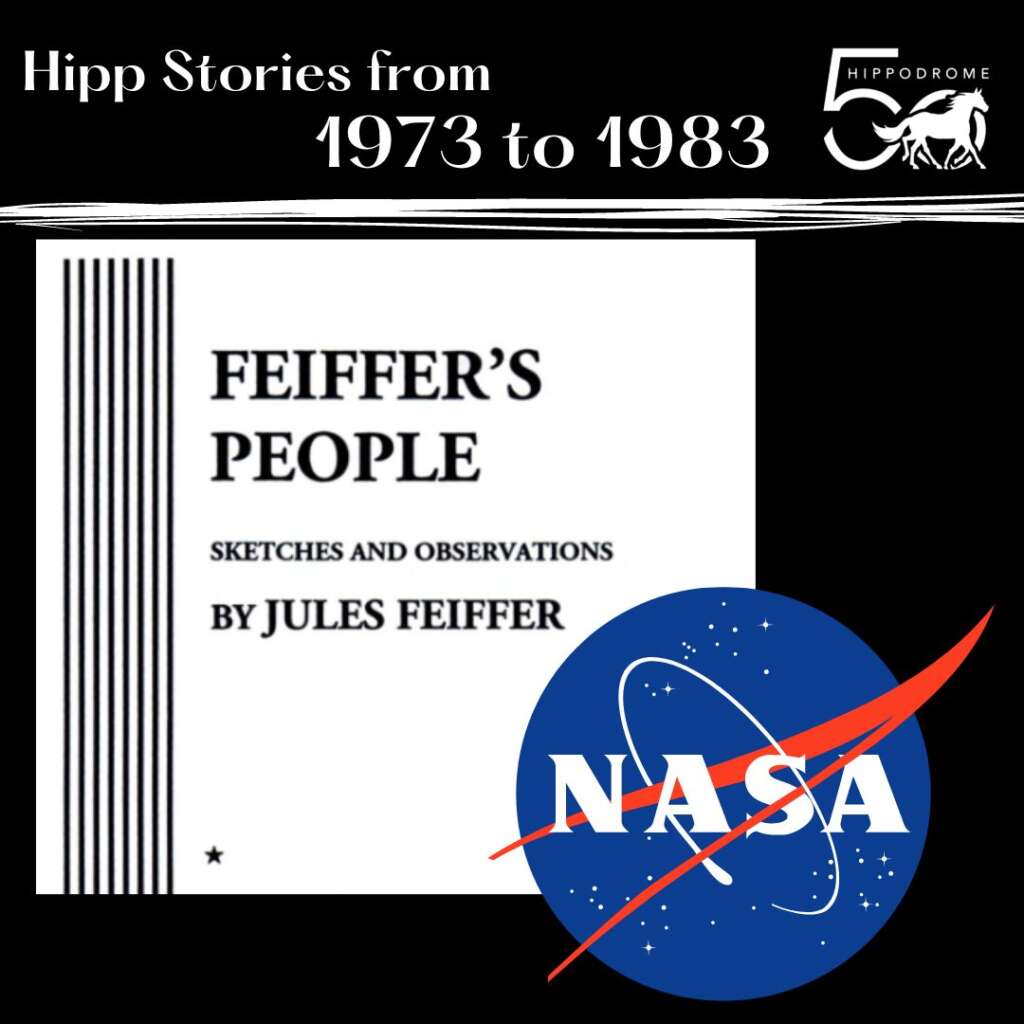How it all began and the early years...

"Six of us were in the theater department at UF, and we were all together in the Florida players and really loved the experience of working together.We felt like there was a dearth of theater in Gainesville at the time, and we wanted to do something to express ourselves and see what we could create in Gainesville."
Bruce Cornwell, Founder
“…And so we got together regularly. There were four of us that were living in a small house just off 13th street, and the other two were down in Miami and would come up to visit regularly. And we would go to garage sales to look for equipment for the theater. We would sit around in the evening and talk about possible names for the theater, not to mention what kind of shows we wanted to do. We would share scripts with one another, and gradually, we just started making plans to get this thing underway. Regardless of whether or not we were fully ready to do it, we’re we were just dying to pull the trigger and make it happen.”
"Finally in Early April we found this old plumbing warehouse on Hawthorne Road. It was vacant and most people thought it was an abandoned convenience store, due to its scale and the fact there were glass windows all along the front of the building. "
Gregory Von Hausch, Founder
“I graduated from UF in June 1972. Mary [Hausch] and I moved to Miami (ok, worse than that, Hialeah), saving money to start the theatre. Kerry and Orin were still at UF. From the autumn of 1972 thru early April 1973, Mary & I drove up every weekend in my old unairconditioned Hippie van. We were searching for a location for the theatre…one that could been made into a do-able space, and one we could afford. Finally in Early April we found this old plumbing warehouse on Hawthorne Road. It was vacant and most people thought it was an abandoned convenience store, due to its scale and the fact there were glass windows all along the front of the building. The top floor which was street level had basically a big open room and an office. Downstairs was a basement that wasn’t underground but built over a substantial drop or cliff. That basement would serve as a Scene Shop, Costume Dept, Dressing/Makeup area (with no walls), and a refrigerator. It had a garage door that looked out onto a sandspur patch of weeks. The stairs from above were accessed by a heavy trap door. Along the stringer of the stairs we would write the name of every production with the date.”

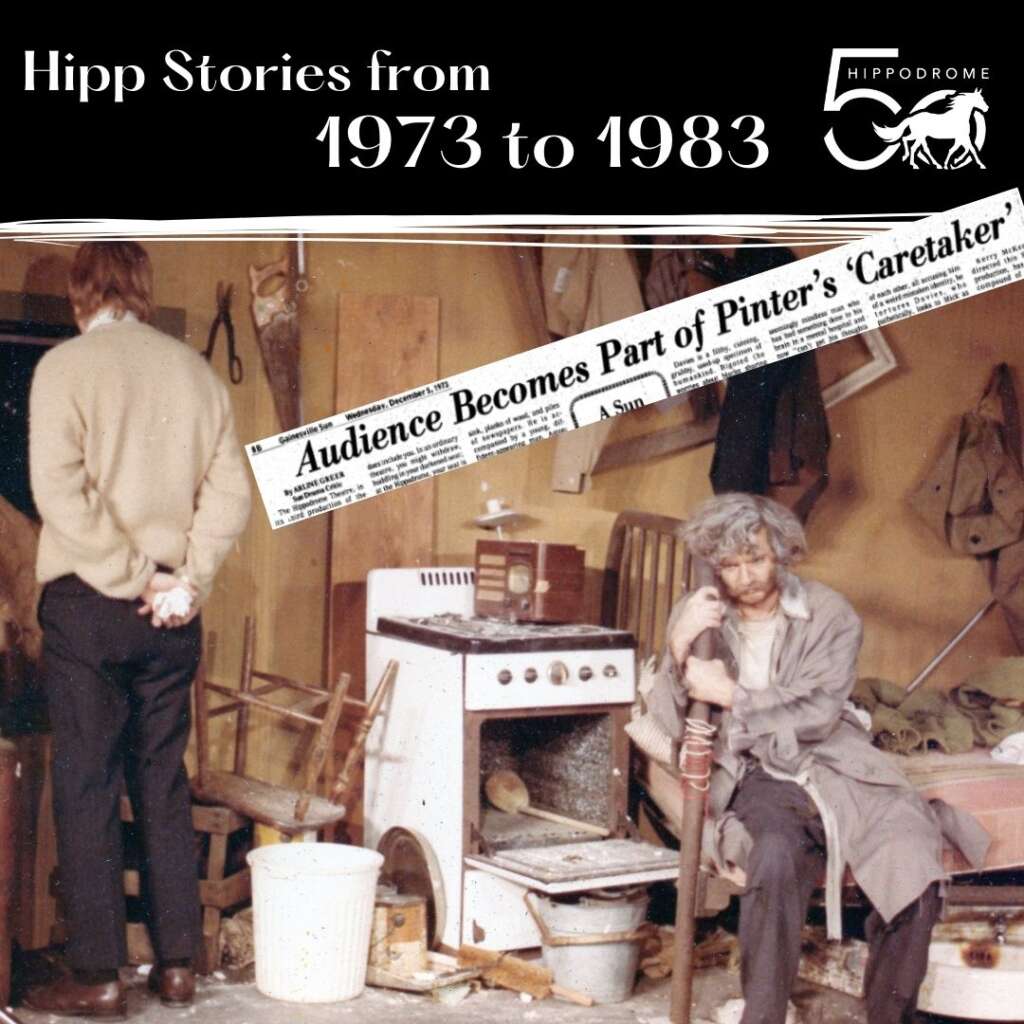
1973 - The Caretaker
"I remember the set was just a mess. It was so realistic and looked like a house that had just been foreclosed."
Ken Peterson, Actor
“Hippodrome had very few lights, so most were made of coffee cans and duck tape with a gel on top. But, they even had actual light rain during the show, which drained into the basement. I have always loved Pinter, but working with that gang taught me the famous Pinter style. I remember I had a lot of difficulty with my character’s monologue about shock therapy and Kerry was gonna cut it, until Dan and Rusty helped me with it. It seems that the show really got a lot of drama fans out and even many years later, people mentioned how much they liked it.“
1973 - The Caretaker
"I didn't know Dan or Rusty at the time of casting, just knew of their greatness. Kerry McKenney Oliver-Smith was the director of the show and was terrific with the characters.”
Ken Peterson, Actor
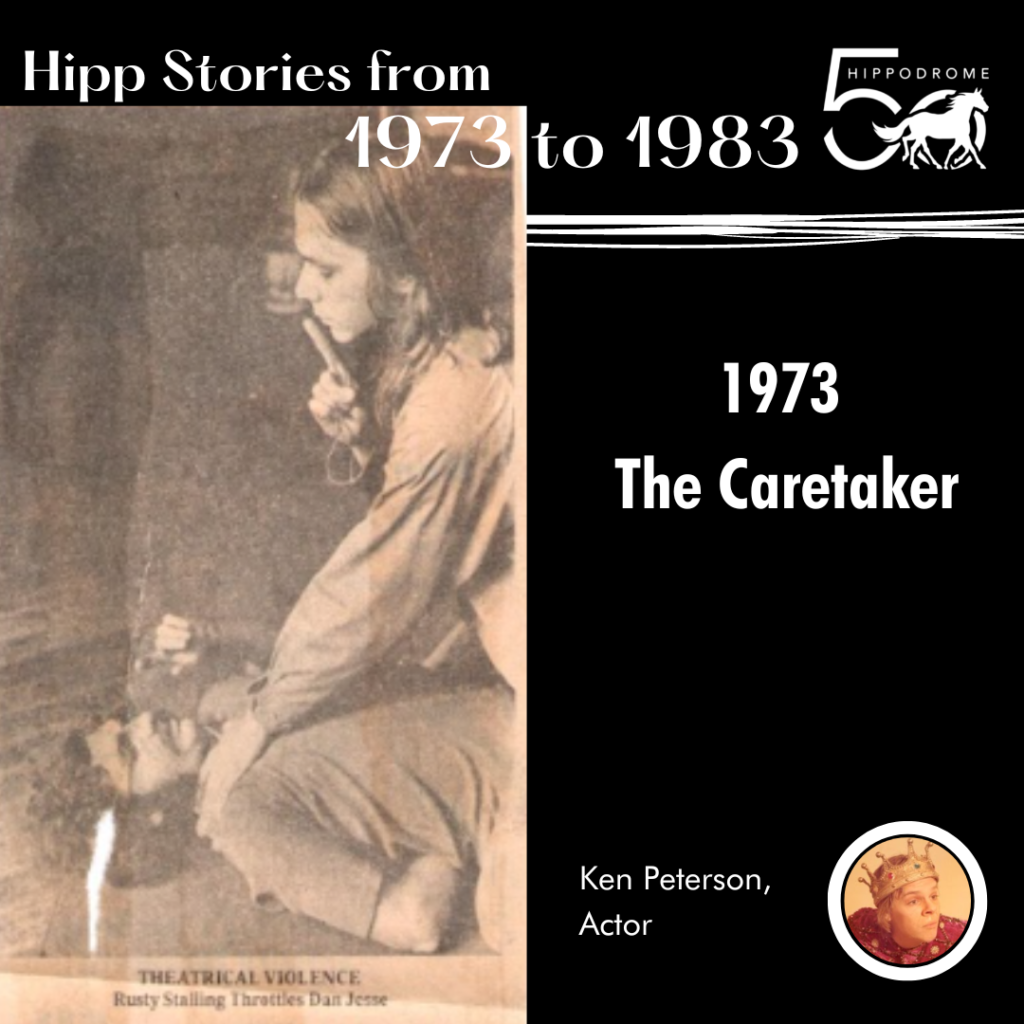

1975 - Papp
"Unfortunately, preparations for the Hippodrome’s production of PAPP coincided precisely with a moment when we were flat broke – I mean, the worst cash-flow crunch to hit since the theatre’s opening -- not a penny in the bank."
Bruce Cornwell, Founder
“As imagined in Kenneth Cameron’s darkly comic portrayal of the Holy See in the somewhat-distant future, the nomenclature and rituals of the Catholic church have devolved into a vocabulary of gibberish and a ridiculously bizarre collection of divination rituals that includes reading the entrails of small animals. The man we call the Pope is known to the faithful as Papp. His home, referred to as The Vocation, occupies a hollow, rodent-infested shell of its once majestic cathedral. As audience members, we’re not quite sure whether a cataclysmic event or an unfortunate devolution of humankind led to this brave new world.
Unfortunately, preparations for the Hippodrome’s production of PAPP coincided precisely with a moment when we were flat broke – I mean, the worst cash-flow crunch to hit since the theatre’s opening — not a penny in the bank. To make matters worse, we were pretty committed to “Environmental Theatre” at the time, so of course we intended to transform the entire theater into this “Vocation” of the future. Not to be discouraged, we embarked on the process of creating the set, the costumes and the lighting for our offbeat basilica in a spirit of undaunted, boundless creative energy… and less than a shoestring in funds.
We became the original Repurpose Project. We scavenged building materials and artwork from every conceivable source. Marshall New had created a rather irreverent 8-foot-tall piece of art and sculpture titled “Jesus Kitsch” for the Faculty Art Show which became the centerpiece of our narthex. UF art professor Hollis Holbrook loaned us several of his life-size plaster maidens, each frozen at a moment of disrobing. Marilyn Wall’s sleuthing produced enough moth-eaten drapery to create robes for the Papp, his valet Curio, and their concubine the Hoer of Babylon.
Simultaneous with the play’s opening, UF brought Jean Claude van Itallie — playwright of the internationally-renowned Open Theatre — here to conduct a writing workshop. Hippodrome founders attended the workshop together and promptly invited Jean Claude to dinner, to the Ichetucknee for a rafting adventure and to a performance of PAPP. Something apparently worked because the very next morning our guest personally called Ruth Mayleas, director of the National Endowment for the Arts, and beseeched her to send someone asap to evaluate the Hipp for NEA funding. Barely a month later, Theatre Communication Group’s associate director, Arthur Bartow, visited the Hipp for a different production, and soon thereafter we began receiving funds annually from the National Endowment for the Arts. “
"Although initially stunned by the small size of the Hawthorne Road facility, I discovered that performing in such close quarters was quite powerful! It was truly engaging to connect so very closely with the audience! This space helped create a wonderful intimacy that I cherished the rest of my theatre career. Although they moved on to larger venues, the Hippodrome has never lost that sense of intimacy."
Dan Jesse, Actor
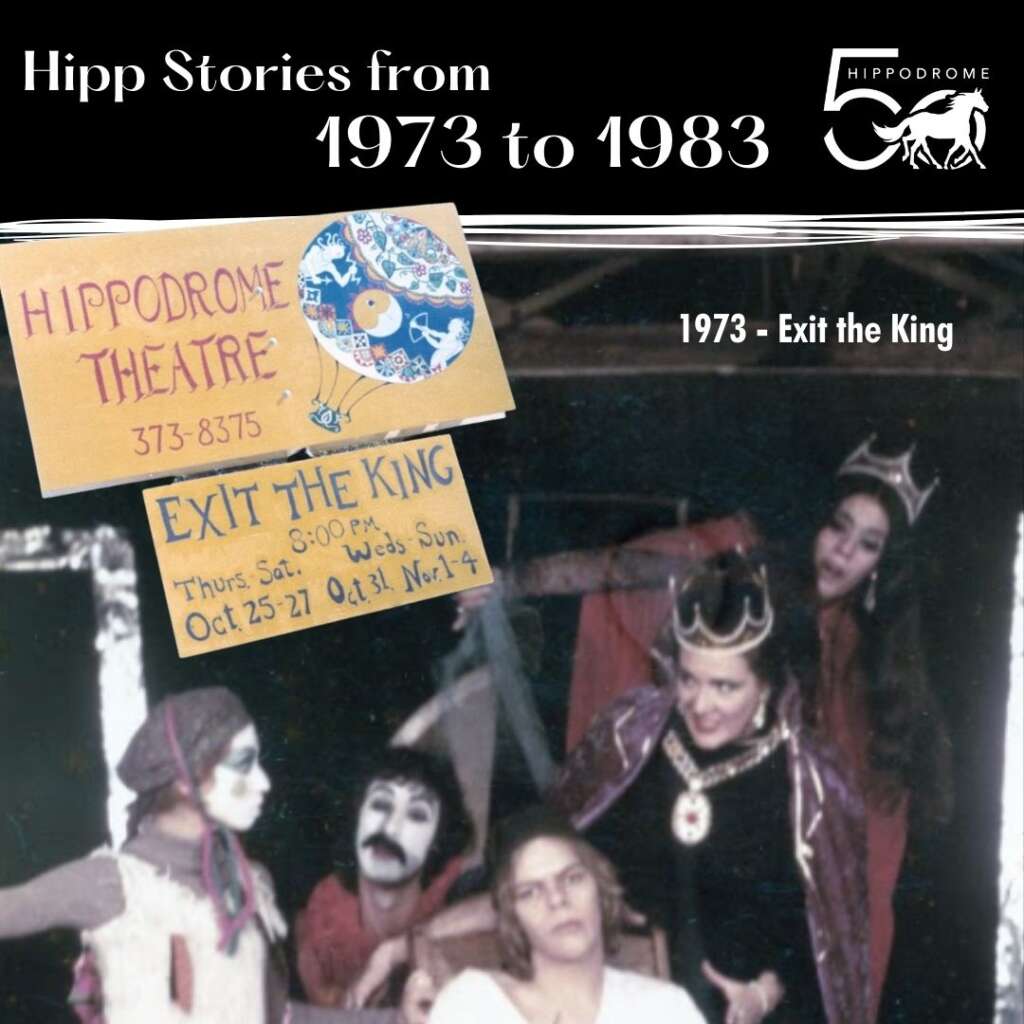
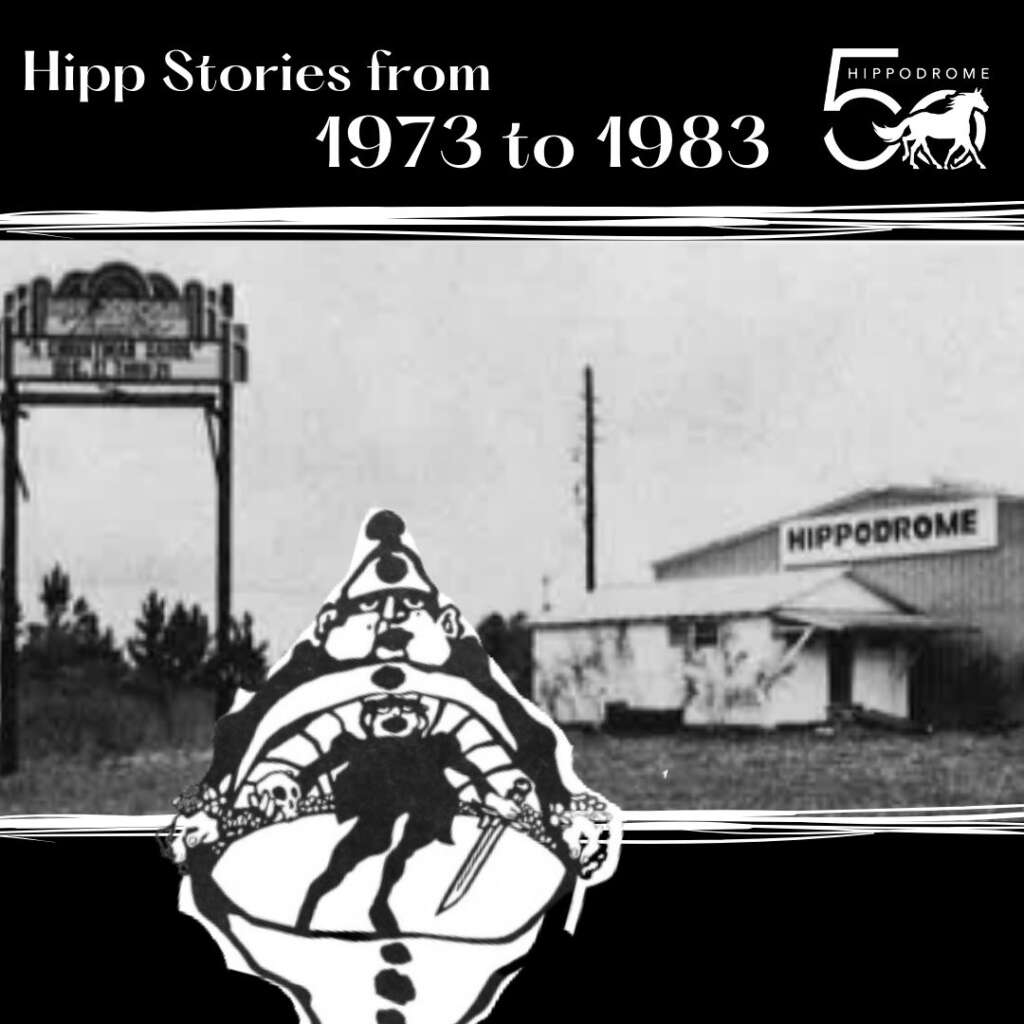
"The Warehouse on 441 was in many ways an easier space to work in. It was almost twice the size of the current Hipp stage, and there was much more space. Of course the audience entered from behind the set, so that was nice to get away from."
Carlos Asse, Set Designer
1979 - They Shoot Horses, Don't They?
"Creativity blossomed! Bold inventions varied from intense dramas like “They Shoot Horses, Don’t They?” to outrageous comedies, during what is often referred to as the Golden Age of the Hippodrome. Staff paychecks were iffy and folding was always a threat, but the love of exciting theatre kept it growing!"
Dan Jesse, Actor
“After time in New York, I joined the Hippodrome staff for three years in the late 70s. The warehouse venue allowed for stages in the round or full three-quarter thrust. Seating capacity greatly increased, but intimacy remained. The shows benefited from enhanced production values and a more experienced acting company. Creativity blossomed! Bold inventions varied from intense dramas like “They Shoot Horses, Don’t They?” to outrageous comedies, during what is often referred to as the Golden Age of the Hippodrome. Staff paychecks were iffy and folding was always a threat, but the love of exciting theatre kept it growing!”
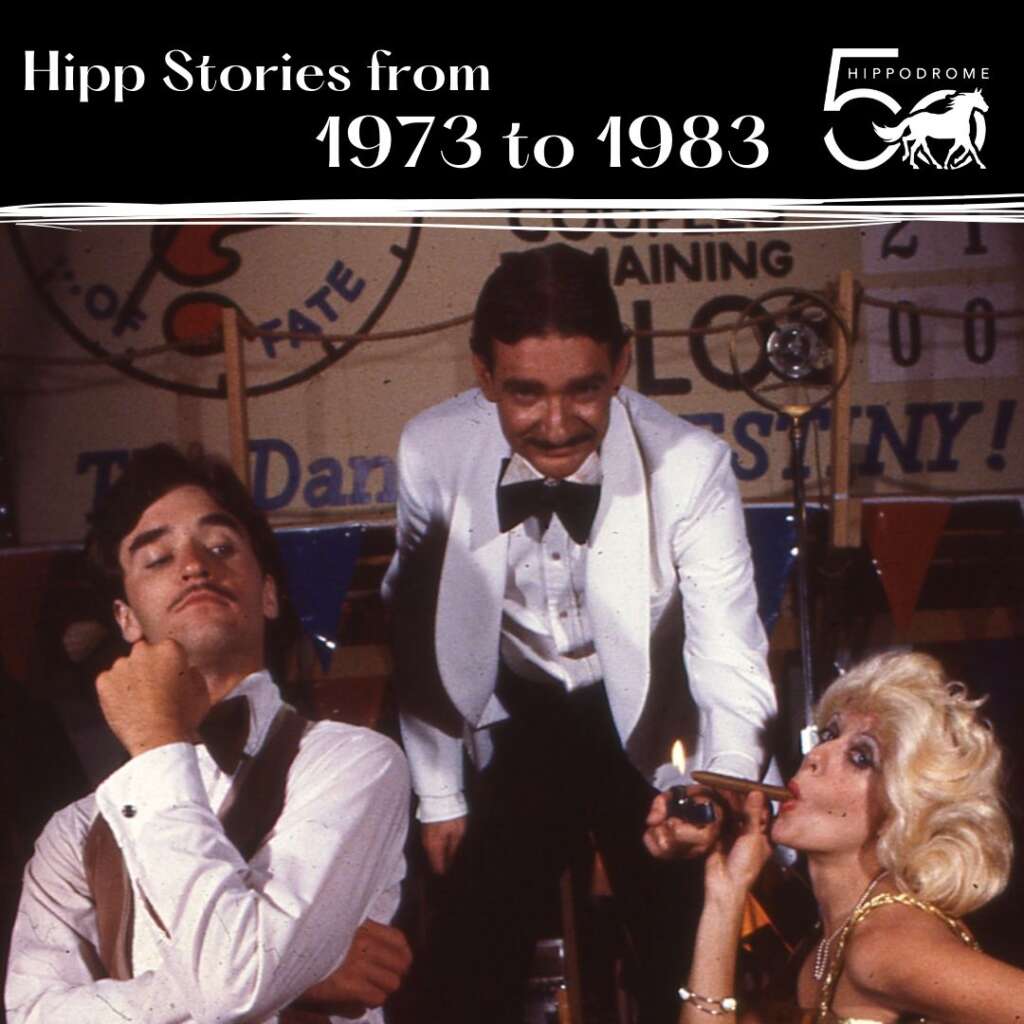
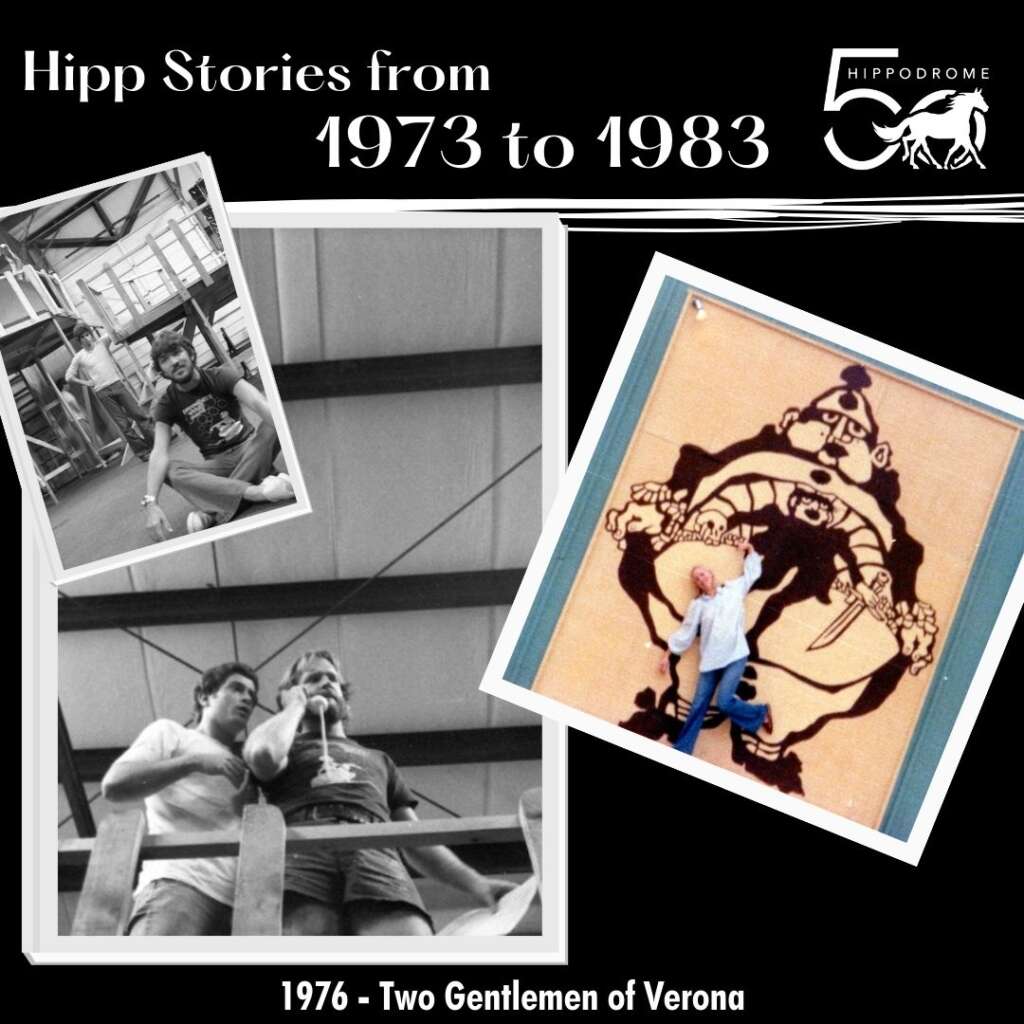
1976 - Two Gentlemen of Verona
"HIPP II, my favorite of our three spaces, was a giant steel warehouse, with a metal roof and translucent skylights. We needed to cover the skylights in order to achieve a blackout."
Gregory Von Hausch, Founder
“HIPP II, my favorite of our three spaces, was a giant steel warehouse, with a metal roof and translucent skylights. We needed to cover the skylights in order to achieve a blackout. We tried dark material and then plywood, but both succumbed to wind and blew away. The discovered the UF Chemistry dept was throwing away twelve-foot-long chests of drawers that they used to store chemicals and tools.
…
We used the drawers with tops in our tool shop for storage and workbench. And somehow we lugged the extra tops to the roof to cover each 4’x10’ skylight with two tops each. There were eight skylights requiring 16 tops. They worked really well but it was a Herculean task.
…
As I said, the roof was metal, and therefore, whenever a rainstorm took place during a play, we would have to take an unscheduled intermission as it sounded like you were inside a snare drum. “
1979 - They Shoot Horses, Don't They?
"I remember it feeling real. A sense of how desperate the people of that day were. And the director and actors really got into making it real. I read a lot about that time period, and we talked about it so we could really get the feeling of the depression. I don't remember the cast parties, just the reality of the show and how tired and sad I was thinking about how hard the Depression must have been for my parents and grandparents."
Rob Ferguson, Actor
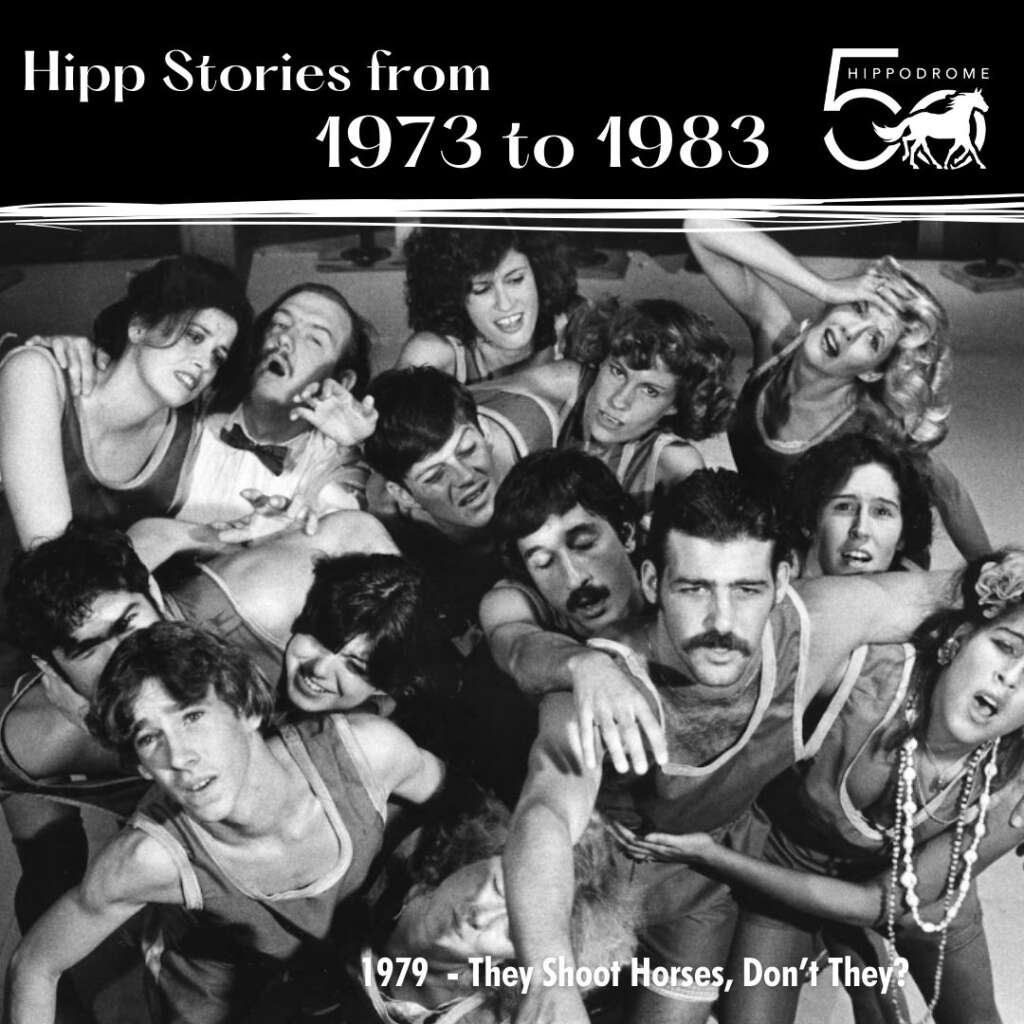
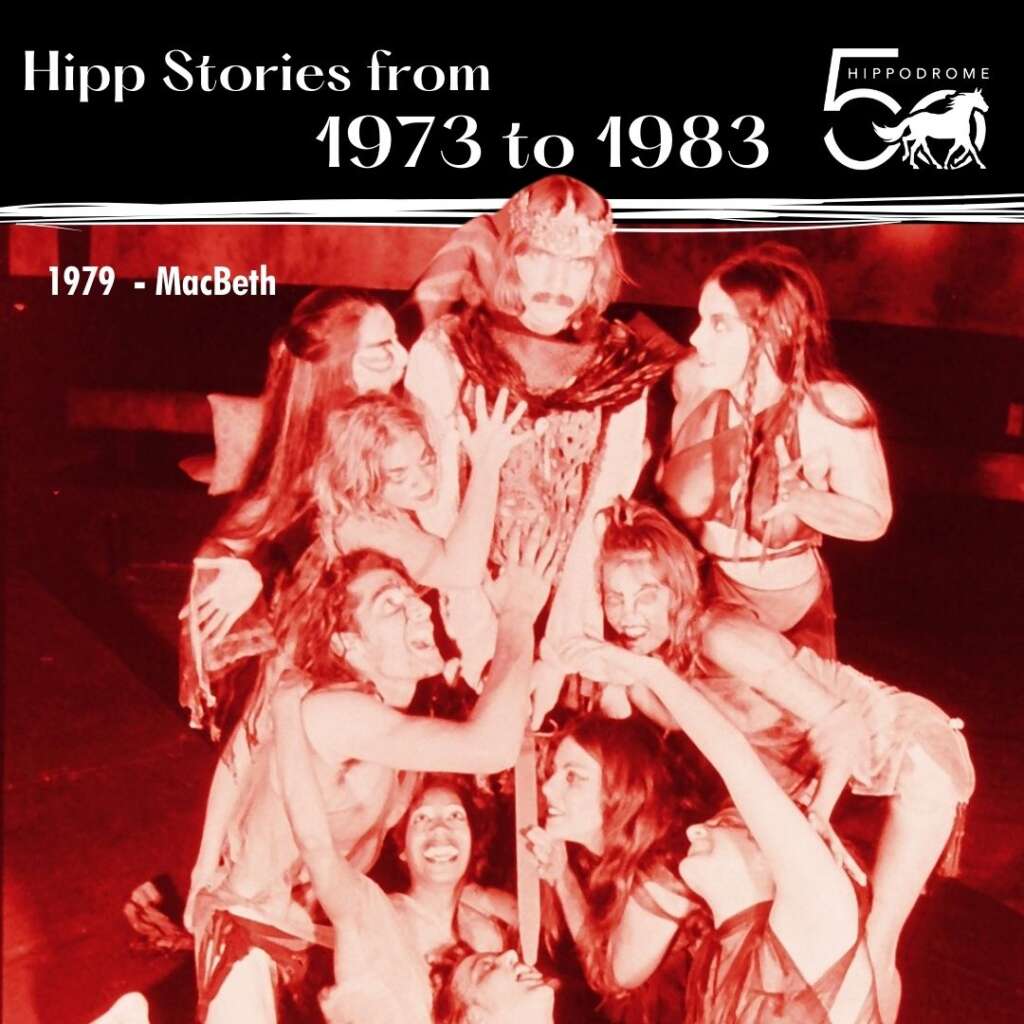
1979 - Macbeth
"The stage was in the center with exit and entrance ramps in four different directions. In this production, they brought all of the murders, which are traditionally offstage, on stage. It was also decided there would be the use of fake blood for each of them; the impact of the gore reflected our times. The amazing thing was that the floors were covered in blood through many acts and to my knowledge no one slipped and fell. A production I shall never forget."
Kim Ferguson, Usher
“As a sophomore student at UF, my memory of the hippodrome was shortly after it opened. I volunteered to usher for this new company which was starting out at a strip mall somewhere in Gainesville.
The first production I attended was Macbeth.
The stage was in the center with exit and entrance ramps in four different directions. In this production the artistic director decided to bring all of the murders, which are traditionally offstage, on stage. It was also decided there would be the use of fake blood for each of them; the impact of the gore reflected our times. The amazing thing was that the floors were covered in blood through many acts and to my knowledge no one slipped and fell.
A production I shall never forget.”
1979 - Tiger Tail
"As Tennessee Williams first entered the Hippodrome's warehouse location in 1977, he muttered, "Baby, looks like I'm now playing Off-off-off-off-off-off-Broadway". Various other issues kept the playwright disgruntled until opening night's standing ovation for "Tennessee Williams' Tiger Tail". He immediately changed his tune. Earlier that day he had toured the hopeful future home of the theater in the Old Federal Building downtown. After opening night as he and I stood in the warehouse parking lot, he said, "Well, baby, it looks like you'll be moving from the outhouse to the courthouse!"
Marshall New, Actor
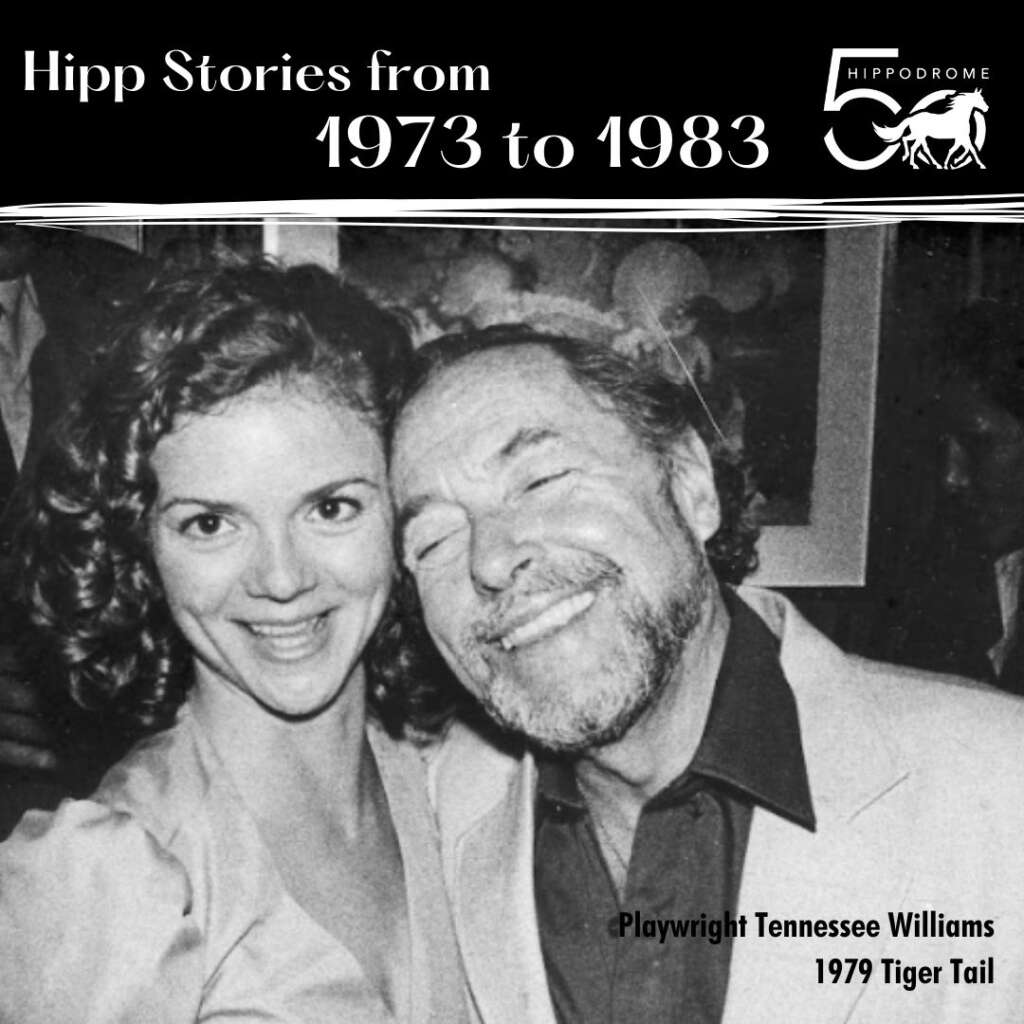
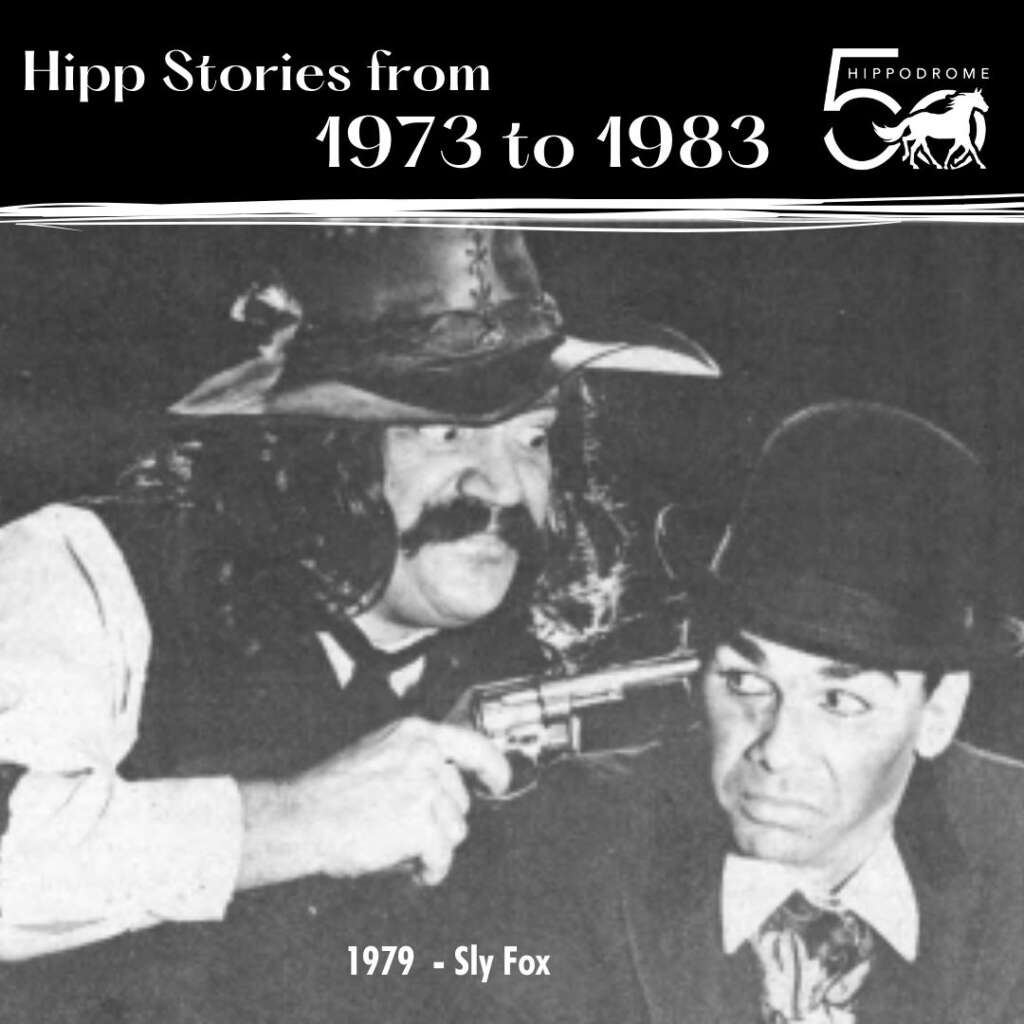
1979 - Sly Fox
"The late, great, Mike Beistle was playing the judge, and I, a lawyer, and as I approached the bench he waved his six-shooter loaded with wax wad blanks, and it went off about 6 feet away from me accidentally, and hit me right between the eyes- and started bleeding profusely!"
Gregg Jones, Actor
“I dabbed the wound with my handkerchief and on a break when I went offstage, stuffed the wound with ‘plasto’, a kind of wax for special effects makeup, and went back out for curtain call. I still have the scar, and was lucky I didn’t move when the gun went off, or I would have lost an eye. Mike apologized every time I saw him for 30 years after that happened until he passed away, he felt so bad about it, but I always tried to let him know I was fine…and lucky!””
1981 - The Elephant Man
"I was honored by being asked to portray the physician, Dr. Treves, in the new venue’s premiere production, “The Elephant Man.” The cast realized that the first show in this magnificent facility was introducing the audience to the maturing of the theatre. It was truly an historic moment. "
Dan Jesse, Actor
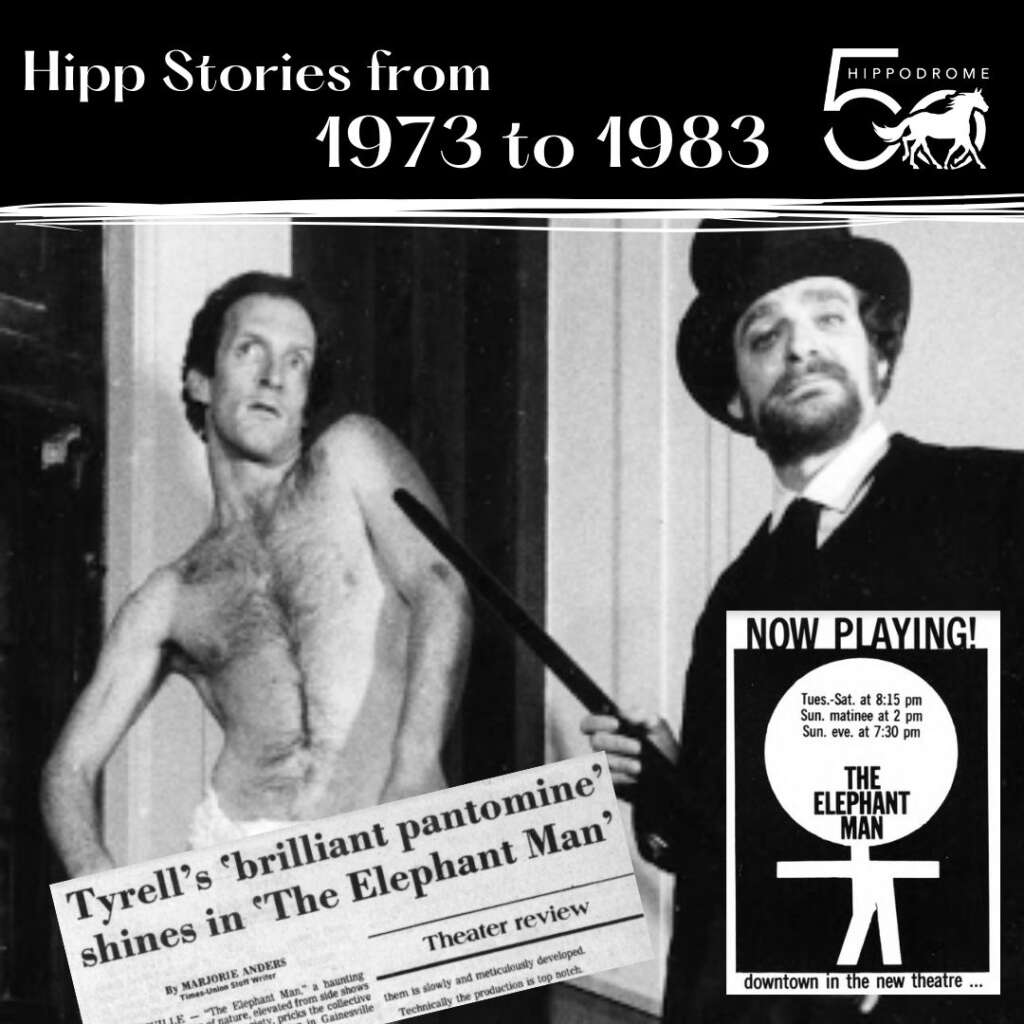
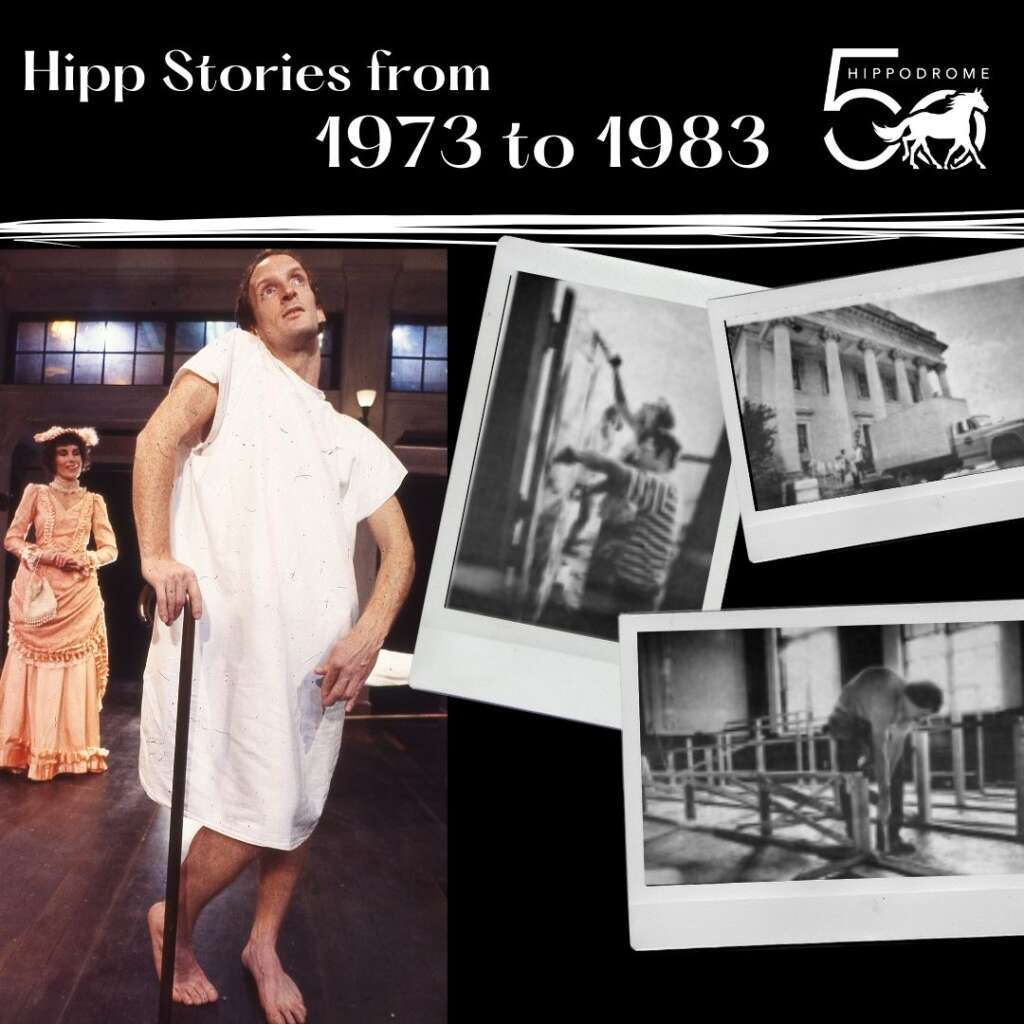
1981 - The Elephant Man
"The Elephant Man was the first show in the Hipp space in the old post office. We didn’t know if we would have the new space ready in time, so I designed 2 different sets for the 2 different spaces. 2 weeks before opening, there were still no seats in the theater. I said, “So where are we doing the show - I need to build the set.” They said, “let you know in a couple of days”. SIX DAYS before opening, the space was ready and we went to work. God that was a crazy time. But we made it! And what a beautiful show. "
Carlos Asse, Set Designer
1981 - A Christmas Carol
Fun Fact: "The set of the Elephant Man was adjusted and adapted to be the classic A Christmas Carol set for so many years. By the end it was held together with duct tape, glue, and prayers."
Carlos Asse, Set Designer
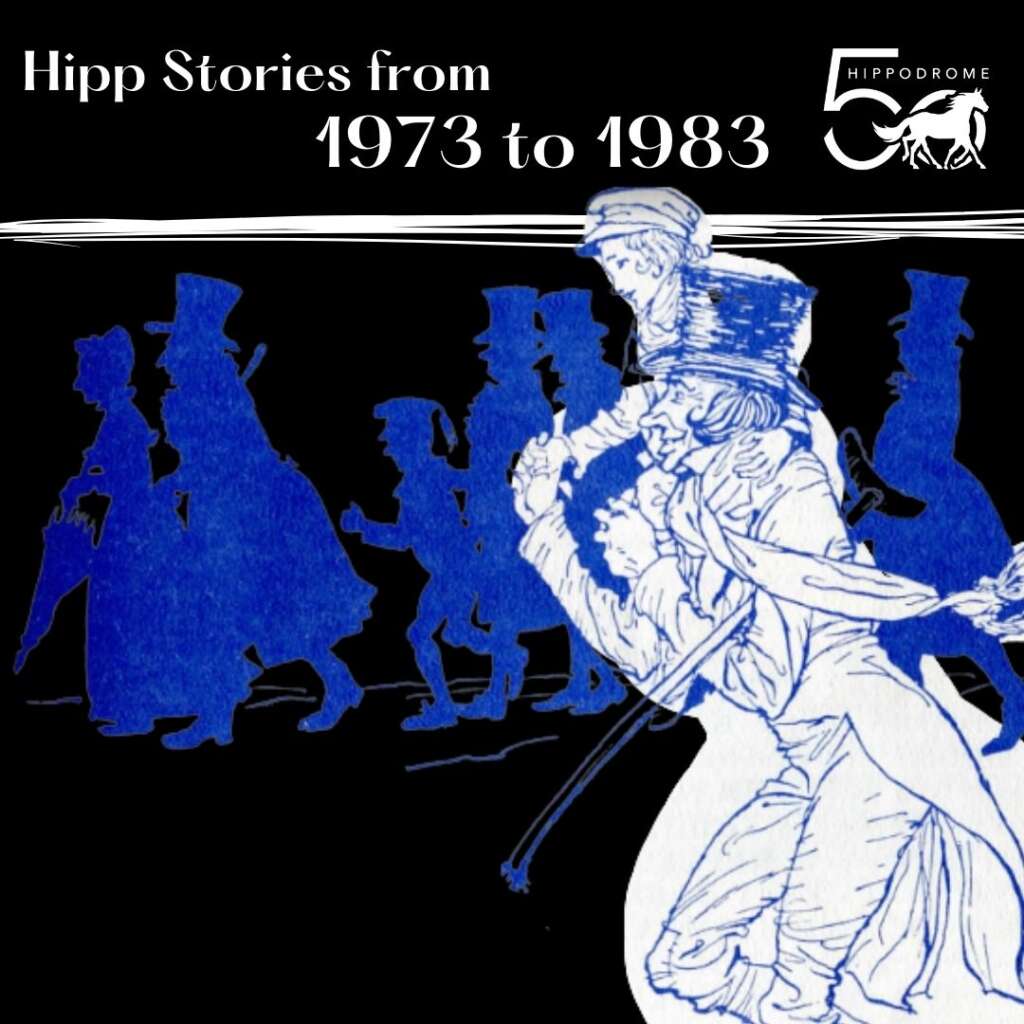
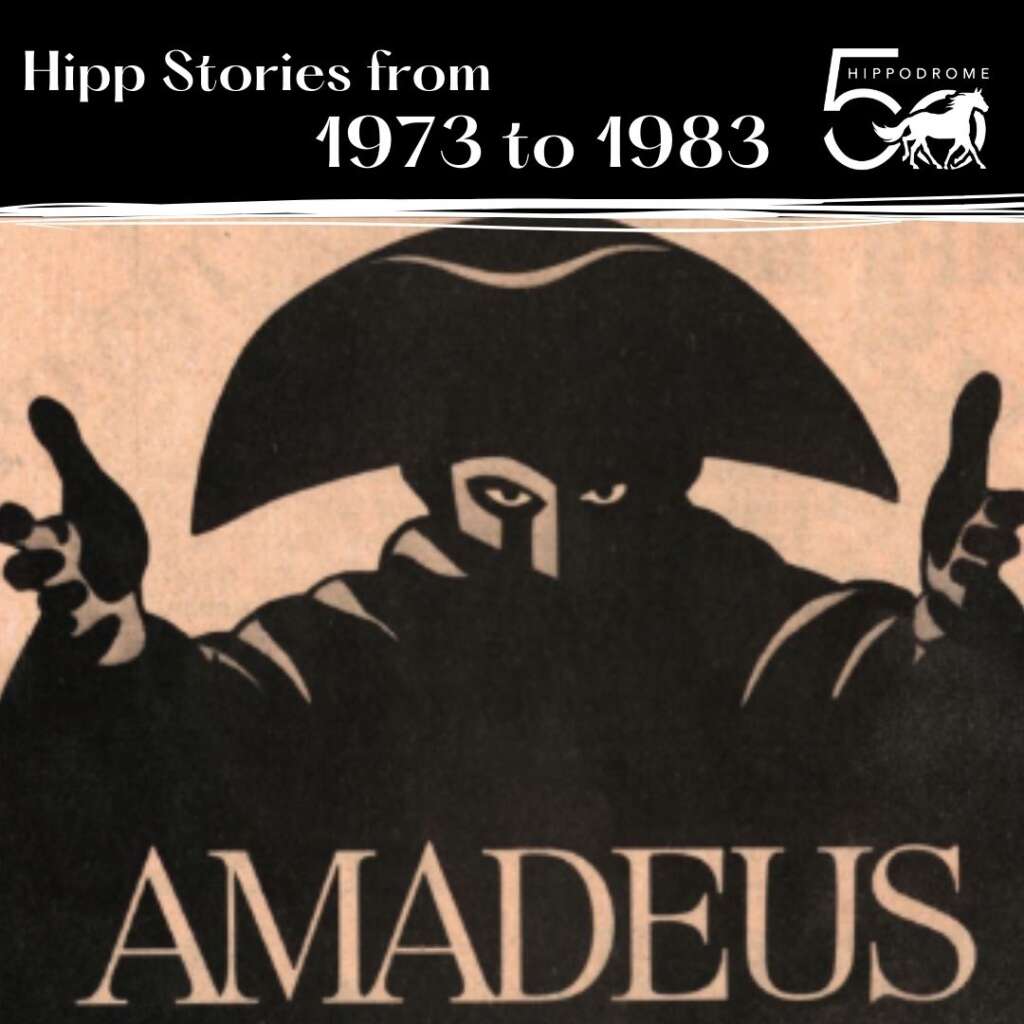
1983 - Amadeus
"On opening night the house was sold out and on a hold, so the house manager told Mike and I to go up to the third floor to wait out of sight. No one told the SM, so the show started without us knowing (or them knowing where we were). I'm sure the audience thought they were in the twilight zone because the whispers went on for 5 minutes as they were trying to find us."
James Wren, Actor
“Amadeus began with that wonderful whisper chorus with “Salieri” cutting through from time to time for about the first 30 seconds of the show. I was one of the Venticelli (along with Michael Stevens) who burst in through the voms to then start all of the dialogue. On opening night the house was sold out and on a hold, so the house manager told Mike and I to go up to the third floor to wait out of sight. No one told the Stage Manager, so the show started without us knowing (or them knowing where we were). I’m sure the audience thought they were in the twilight zone, because the whispers went on for 5 minutes as they were trying to find us. Jeff King, Mike Beistle, Rusty Salling and all the others were trapped whispering (the whispers became “Where the F*** are they?” and “I’m going to F****** kill them!”) before the ASM burst onto the third floor and shouted “THEY STARTED THE SHOW FIVE MINUTES AGO”, and Mike and I tore downstairs and raced onto the stage out of breath to death stares from the entire cast. Jeff King spent the entire showing leaning over my shoulder and saying “I will kill you after this show”.
1983 - Amadeus
"During one performance the prop pastry got knock off the tray backstage and Debbie Laumand had to eat polyurethane coated fake pastries on the plate. Since the entire scene was about her eating the pastry, she peeled one off of the tray and choked it down. We all ran around with her backstage shouting "call poison control!"
James Wren, Actor
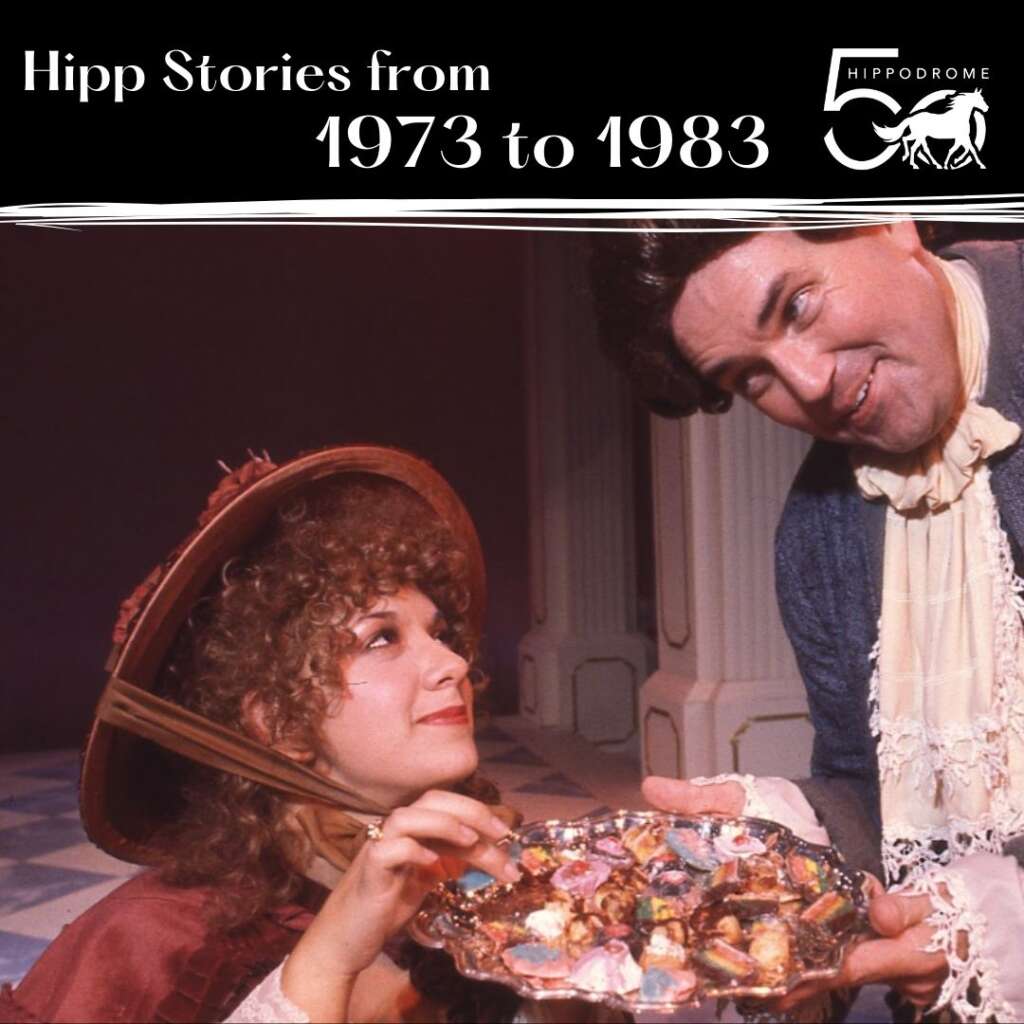
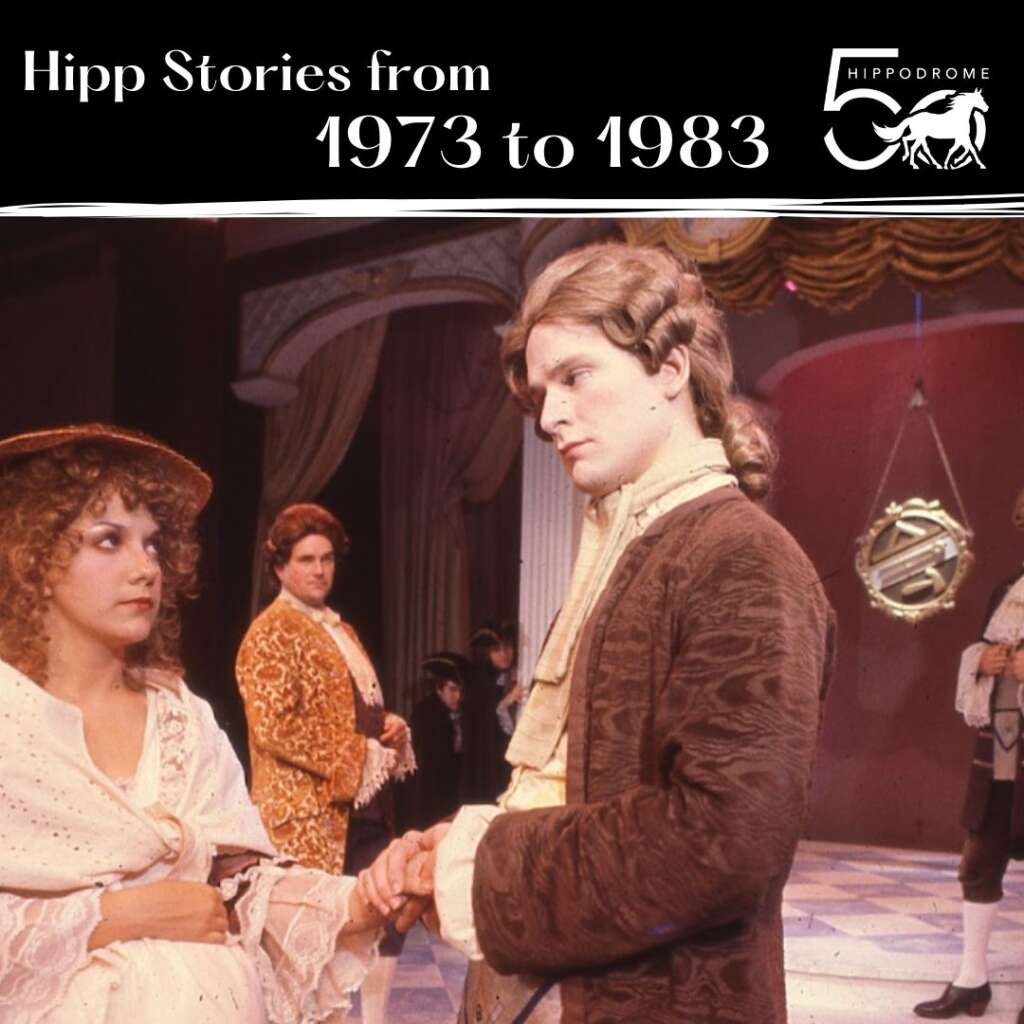
1983 - Amadeus
"...the set for Amadeus had something new every night. I swear. I always made it a point to walk the set to make sure I wasn't surprised by some piece of additional trim."
James Wren, Actor
“Also, Carlos Asse (Set Designer) was notorious for grabbing me just prior to an entrance to say something like “JIM! Do not sit on the downstairs bench… the paint is wet!” When I was blocked to spend a good portion of the first act on that bench.”
1976 - Feiffer's People
"The audience would file thru the tent come in one flap and out the other without stopping to view an entire sketch. I’m sure they thought what’s this have to do with space and where is the exit. "
Gregory von Hausch, Founder
In 1976, NASA hired us (Marilyn, Kerry, Mary, Marshall, Bruce and me) to produce a piece of theatre to be performed at Cape Kennedy in honor of the Bicentennial. I think they gave us about $2500 for a three-day weekend. They put us in a tent, akin to a circus tent, just outside the VAB. There were all kids of exhibits and hands-on activities. All of that was pretty cool, but whosever lain brain idea of doing theatre…well that was a waste. We knew as much but didn’t want to pass up the payday…plus they put us up in three beachside rooms on Cocoa Beach…and, on paper, it would look good on grant applications.
We decided to do FEIFFER’S PEOPLE, a series of short sketches ranging from less than a minute to maybe 3 minutes each. We would do four, one hour shows per day in the tent. We each would wear these Danskin Body Suits that we had bought for FRANKENSTEIN. In retrospect we looked ridiculous. The sketches were, for the most part, a chuckle at best. Most were like a groan. The audience would file thru the tent come in one flap and out the other without stopping to view an entire sketch. I’m sure they thought what’s this have to do with space and where is the exit.
